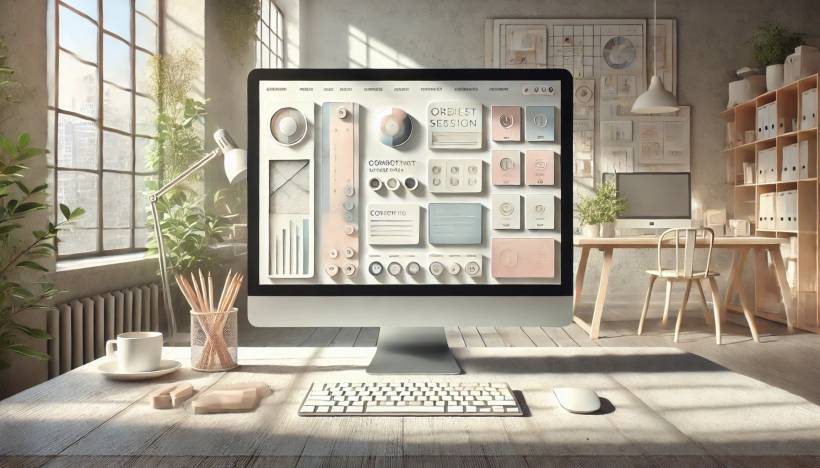In today's digital world, website design plays a crucial role in shaping user experience. A well-designed website is not just about aesthetics; it's about creating an intuitive and seamless interaction for visitors. The concept of simple yet elegant design has gained immense popularity because it enhances usability while maintaining a sophisticated look. Businesses, personal brands, and even informational websites benefit from an approach that prioritizes clarity, efficiency, and user engagement.
1. The Power of Simplicity
Simplicity is at the heart of elegant website design. A clutter-free interface allows users to focus on the content and actions they need to take without unnecessary distractions. Minimalism does not mean a lack of features; rather, it ensures that every design element serves a purpose. By reducing complexity, websites become more accessible and enjoyable to navigate.
2. Clean and Organized Layouts
A well-structured layout improves readability and interaction. Grid-based designs, whitespace, and proper alignment contribute to a visually appealing website. Organizing content logically ensures that users can find information effortlessly. An uncluttered layout with well-defined sections makes navigation intuitive, reducing frustration and improving user retention.
3. Thoughtful Typography Choices
Typography plays a crucial role in how users perceive a website. Elegant website design favors clean, readable fonts that complement the overall aesthetic. Sans-serif fonts like Roboto or Open Sans are excellent choices for a modern look, while serif fonts like Playfair Display add a touch of sophistication. The right combination of font styles, sizes, and spacing enhances both readability and design harmony.
4. Harmonious Color Schemes
Colors evoke emotions and influence user behavior. A simple yet elegant website should use a well-balanced color palette that enhances the brand's identity without overwhelming the visitor. Neutral tones, pastels, and monochromatic themes often work best for an elegant look. Strategic use of accent colors can highlight important elements such as call-to-action buttons and key information.
5. Smooth Navigation Experience
A great website should feel effortless to navigate. Simple, intuitive menus and well-placed navigation bars help users explore without confusion. Sticky headers, breadcrumb trails, and clear category divisions improve usability. Additionally, mobile-friendly navigation, such as collapsible menus and touch-friendly buttons, ensures a seamless experience across all devices.
6. Engaging Visual Elements
Elegant websites incorporate high-quality visuals without overwhelming the design. Subtle animations, soft shadows, and smooth transitions create a polished, interactive experience. Images and icons should complement the content rather than distract from it. Videos, when used appropriately, can enhance storytelling and engagement.
7. Fast Loading Speed
Even the most beautifully designed website will lose its impact if it loads slowly. Optimizing images, using clean code, and leveraging caching techniques contribute to better performance. A fast-loading website not only improves user satisfaction but also positively affects search engine rankings. Keeping design elements lightweight ensures that elegance does not come at the cost of speed.
8. Mobile-First Approach
With the rise of mobile browsing, responsive design is no longer optional. Elegant websites should be optimized for all screen sizes, ensuring that content remains readable and navigation remains smooth. A mobile-first approach prioritizes essential content while adapting design elements dynamically for different devices.
9. Subtle Interactive Features
Well-placed interactive elements can enhance user engagement. Hover effects, animated buttons, and smooth scrolling add a dynamic feel without overwhelming the experience. Micro-interactions, such as subtle changes when clicking or hovering, provide feedback and make the interface feel more responsive and enjoyable.
10. Strong Call-to-Action (CTA) Placement
A simple, elegant website should guide visitors toward key actions, whether it's signing up, making a purchase, or contacting the business. CTAs should stand out without being intrusive, using clear wording and well-contrasted buttons. A well-designed CTA encourages interaction while maintaining the website's aesthetic integrity.
Conclusion
Simple, elegant website design is the perfect balance between aesthetics and functionality. By focusing on clarity, usability, and thoughtful design choices, websites can create meaningful interactions that enhance user experience. Whether for businesses, personal portfolios, or informational platforms, an elegantly designed website ensures visitors stay engaged and satisfied.





Comments